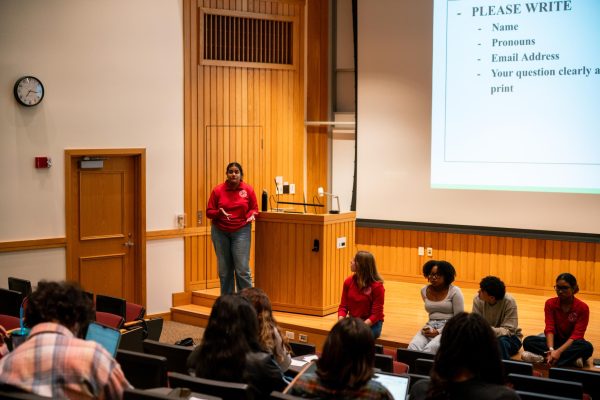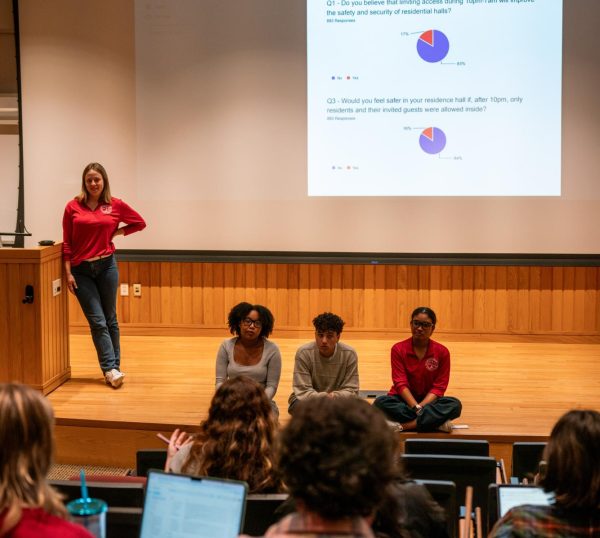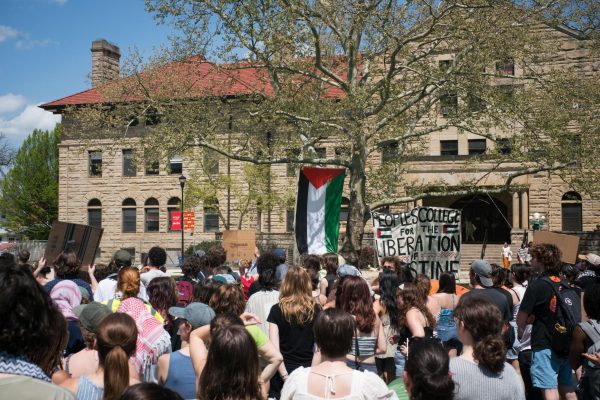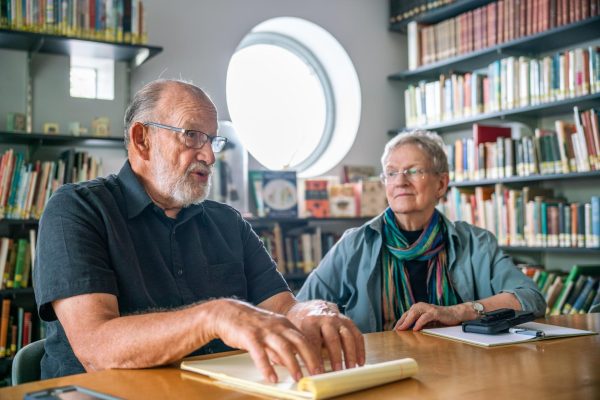Tensions Between College, UAW Not New
The current campus controversy around the proposal to outsource campus and dining services is not the first time that significant tensions have erupted between the College administration and members of Oberlin’s chapter of the United Automobile Workers union.
Notably, in 1995, UAW members said they would strike if they were unable to reach agreeable contract terms with the College by March 31. Ultimately, a deal was reached an hour before the deadline and a strike was avoided.
“The College recognizes the right of an individual to strike,” wrote Alan Moran, then-director of communications, in a March 30 memo to the Oberlin community. “The union has the right under the law to publicize the strike by picketing the entrances to Oberlin College.”
The near-strike was prompted by contention over a number of issues, including job postings, vacation allowances, and union security, according to Review coverage at the time (“UAW, College reach contract,” April 7, 1995). The strike came a few years after campus workers voted 51–38 to unionize in the summer of 1991, with many workers choosing to abstain. According to the same Review article, the decision to unionize followed concerns about worker supervision practices.
“Workers said the [opposition] to performance management was one of the main reasons the union was brought to campus,” the article read. “Because it’s a management issue, the program was not on the bargaining table, though the settlement recognized that the controversial program had ended.”
Performance management was a program that began in September 1990, according to the same Review issue. It was heavily criticized for its impact on workers, who alleged that they felt surveilled and unable to have a sense of ownership over their work. In March 1992, nearly a year after workers had voted to join the UAW, more than 1,000 students and faculty members presented a petition to the Board of Trustees in support of workers. Contentious negotiations began in May 1993 and tensions remained high through the near-strike in 1995.
Performance management included a system of reporting that required custodians to record the amount of time spent on each task of the day. Shortly before the 1995 strike deadline, then-President Nancy Dye expressed her opinion that performance management had become an undesirable program — a sentiment echoed by UAW members.
“One substantive topic upon which the UAW and the College now agree is the undesirability of ‘Performance Management,’” Dye wrote in a March 29, 1995 letter to the College community. “The College adopted this system some years ago as part of a multifaceted effort to improve the efficiency and productivity of our operations division. The multifaceted effort has been very successful in many ways … but the College has come to realize that the Performance Management system itself is flawed in serious ways.”
According to Review coverage from the mid-’90s, the performance management system required employees to use clipboards to scan barcodes at various locations to indicate their location throughout the day, in addition to completing detailed logs about their work each day. Early on in the program, administration claimed that it had improved both productivity and quality of work (“A history of college-labor relations since 1990,” Nov. 4, 1994).
Despite the eventual consensus reached between Dye and UAW over the failure of performance management, union members continued to clash with Dye’s administration over the question of union security — a provision that would require all service workers employed at Oberlin College to join UAW — which constituted the crux of the near-strike in 1995.
There is no current indication that ongoing negotiations between UAW and College administrators concerning potential outsourcing will result in a strike.





